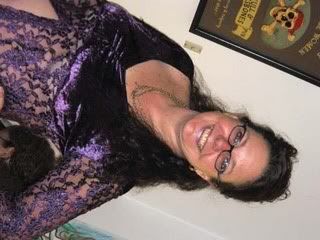
I am often asked on other food forums "What is "typical" Australian food?".. and at first thought, I am always tempted to say meat pies, lamingtons and Vegemite. But the reality is that Australian food is so SO much broader than that. Historically, Australian food prior to the 50's was linked back to England. Australia was culinary, politically, spiritually, socially tied to King and Country. Our collective subconscious was Mother England all the way.
In the 50's, with the post-war immigration boom, and more importantly, the Snowy River Project,
The workers and their familiesMore than 100,000 people from over thirty countries came to the mountains to work on the project. Up to 7,300 workers would provide their labour at any one time.
Seventy per cent of all the workers were migrants. They came to Australia to work on the project, attracted by the relatively high wages. At that time, soon after the Second World War, work was hard to come by in Europe.
At first, most of the workers were men who had left their families at home in Europe. Their plan was to work hard, save money and bring their families out when they could afford to.
The work was hard and the conditions were tough. Because ninety-eight per cent of the project was underground, there was a lot of tunnelling, often through solid granite rock. Work in the tunnels was dirty, wet, noisy, smelly and sometimes dangerous. More than 120 workers died in the project's twenty-five year period.
Living conditions were also hard in the camps and towns built in the mountains to house the workers and their families. Often these dwellings were not suited to the freezing conditions. They were cold and the water would freeze in the pipes. When the workers' wives came to join them in the townships, these women had to work hard to overcome the hardships and establish communities in the strange, new, wilderness environment. When work in one area was completed, the dwellings were dismantled and moved to another area, so very little remains of these towns today.
The majority of the workers stayed on to live in Australia after the project was completed, making a valuable contribution to Australia's modern multicultural society
.
(from "Snowy Mountain Scheme: Australia's Cultural Portal")From 1949 until 1974, Australia saw an influx of new cultures, new ideas and more importantly, new food.
The blonde, blue eyed migrants assimilated, but the Greeks, the Italians, the Turks all suffered at the hands of the White Australia Policy (itself a result of interracial tension between "Australian" and Chinese migrants in the 1850's. It was all well and good to have those "dirty wops" digging our power scheme, but to actually have them living here???
The White Australia policy is a term used to describe a collection of historical legislation and policies that intentionally restricted non-white immigration to Australia from 1901 to 1973.
The inauguration of White Australia as government policy is generally taken to be the passage of the Immigration Restriction Act in 1901, one of the first Acts of the new national parliament upon federation. The policy was dismantled in stages by successive governments after the conclusion of World War II, with the encouragement of first non-British and later non-white immigration. From 1973 on, the White Australia policy was for all practical purposes defunct, and in 1975 the Australian government passed the Racial Discrimination Act, which made racially-based selection criteria illegal.
(from Wiki)
It's a testament to the ingenuity and tenacity of non-white migrants, that they actually stayed, suvived and went on the thrive. And in doing so, sowed the seeds for the insanely multicultural food that is now available to us. Can you imagine Melbourne take-away without a souvki? The Manly Corso without a falafel bar?
Preceding this of course, was the indentured labour of the Chinsese migrants during the Victorian Gold Rush and the Kanak workers for sugar cane in Queensland. In Melbourne, the Chinese population survived in small, cloistered, insular ghettos in central Melbourne.
Arthur Caldwell, himself the son on Irish immigrants, uttered his infamous "Two Wongs Don't make a White" in 1947. (This quote, taken out of context, was to become the catch cry of the White Australia Policy WELL into my youth)
The arrival of Vietnamese "boat people" in the 70's and 80's saw yet another round of immigration and racism, which today translates as most Australians knowing what pho and banh mi are.
The history of Australian cuisine is the history of Australia's adolescence, the history of defining itself (ourselves?) as something separate from our "Mother" (Country). It's the history of racism. From exploitation to negation, to marginalisation to grudging acceptance and finally into mainstream society, ethnic groups in Australia have all held on to one thing. Their cuisine. And in doing so, have made "Aussie food" as varied as the iconic pie (thought to have been brought to Australia by *duh* MIGRANTS!) to Chili Crab, from the pav to Mongolian Beef.
The latest migrants to be vilified are the Somali's, but I hold out hope of mufo and baasto gelling into the Australian food psyche
And it's only very recently that Bush Tucker (traditional aboriginal food) has become mainstream. (But that's a WHOLE 'nother post!)
So, with all of this in mind, we FINALLY come to last night's dinner.
Mongolian Beef.
dry fry 1/3 cup of sesame seed until golden. Place in a mortar and grind with garlic and ginger. Add 3 chopped spring onions, 2 tablespoons of both dark and light soy and a tablespoon of sesame oil. Mix to a paste.
Take 500g of beef strips and marinate in this mix for a couple of hours. Fry off in a wok and serve on rice.
EXCEPT... (and here's where all of this rambling post comes together, folks!), because of the culinary history of Australia, here's what Furry and I did:
Make the beef up as above, serve with Hokkien (Chinese) noodles, wok-fried with onion and yellow caps (Generic Asian). Serve sprinkled with bean sprouts (Vietnamese) and hand-torn basil and coriander (Thai)
And had Blue Ribbon Vanilla Ice cream with chocolate sauce from Daylesford for sweetie!!
Australian Fusion Food at its finest!!









6 comments:
Hi there! I came across your blog while searching for yabby recipes -- great foodie blog! I also have a question for you, and hope you don't mind telling me the answer! :) We just came back from a yabby farm yesterday and would love to try our hand at catching yabbies again. However, the farm really is too far away and it seems that your yabbies were caught in a dam within Melbourne? I assume that it's somewhere near Glen Waverley and we don't live too far from there ourselves, so if you don't mind letting us know where this place is, we would love to have another go! Thanks :)
Hi Leeny, this is Furry. Pg's other 1/2. My advise to you for catching yabbies is easy, in just about any dam, or creek, you'll find yabbies.
Step 1. buy one or two "Opera nets" (these nets look like the opera house when set up)
Step 2. attach a decent length of rope (say 10 mtrs) SECURELY to the net
Step 3. find a dam, slow flowing creek, body of fresh water (Delphin estates all have lakes around them & my kids go yabbie-ing in these lakes when they stay at their mothers house in Craigieburn) & throw in your nets. Try & hide the string under the surface so no one else empties or worse, pinches your nets.
Best bait? Anything. We put in chicken, chicken necks, ham, bacon, stras, salami, kabana, anything. Best results though are definitely got from chicken necks that have started to "turn". Seriously, I've had yabbies that are on the outside of the net, refusing to let go, trying to get to the necks.
Must do's - those in egg, (under the tail you'll see heaps of eggs or little yabbies) - they need to go back into the water.
- those with 3 fins at the end of their tails are female, (males have only 2 fins), should also go back in
- a fishing licence ($25 for a year) which can be got from the place you buy the nets from is another good idea. Chances of getting caught & then getting hassled for not having one is slim .... but ..... get an officer on a bad day & you are 100% rooted! Huge fines, confiscation of vehicles, equipment, etc, etc
Finally, adding to the fun - sneaking into someone's paddock (obviously that has a dam), without prior approval - then setting up the nets is all part of the fun & adds to the "naughty little boy" adventure.
(like pinching apples off a over hanging tree on the way home from school when we were kids).
Happy hunting
Furry
I love mongolian beef - but it's been a while since I made it!
beautiful pic.
I just wanted to say that while there isn't a lot of somali restaurants around yet, there's a couple of ethiopian restaurants. They have great curries. so maybe there's hope on the horizon.
Kazari,
I am really lucky to work in a suburn that hosts 196 different ethnic communities within its borders.
I tried my first Ethiopian wat with injera a while ago.
Believe me, if the Somali/Sudanese communities open a resto, I'll probabaly be the first to blog about it!!
Viva la difference!
Hi Furry, thanks for all the information that you've provided! Sorry for the late response, I've just come back from Tassie after a short break. You have given me heaps of details, there's an estate near us with a lake so we may give it a shot one day! Thanks again for all the help :)
Heya¡my very first comment on your site. ,I have been reading your blog for a while and thought I would completely pop in and drop a friendly note. . It is great stuff indeed. I also wanted to ask..is there a way to subscribe to your site via email?
Bakery Equipment Melbourne Australia
Post a Comment